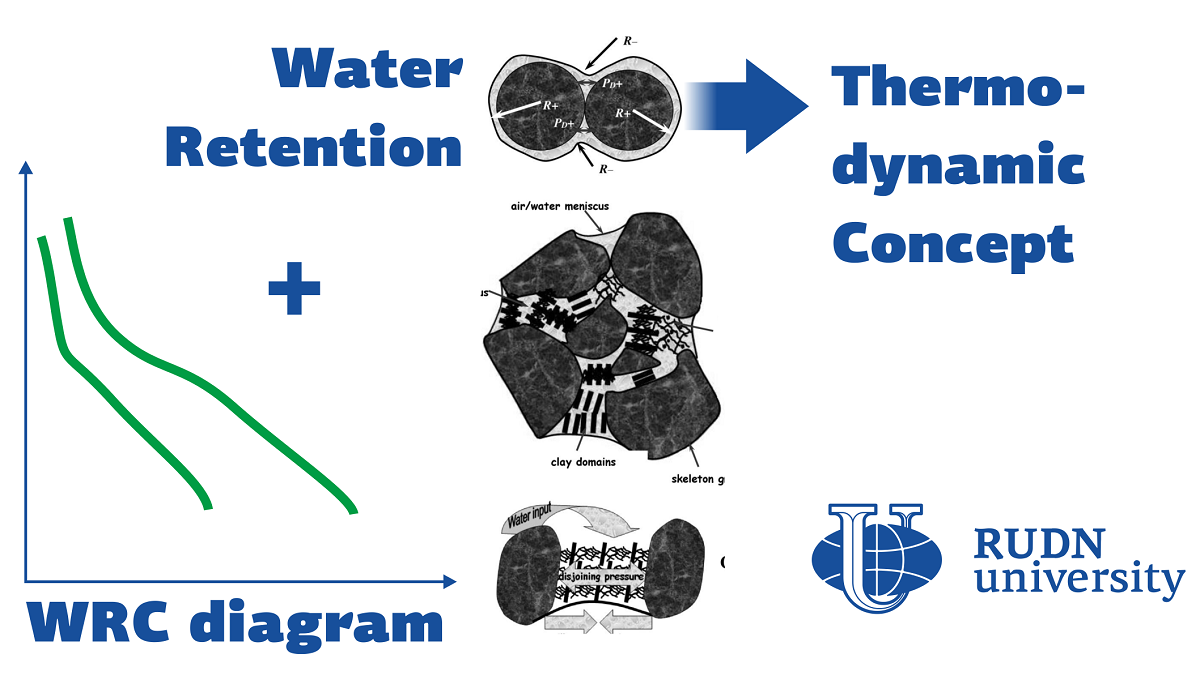RUDN University biologist built a thermodynamic basis for calculating soil parameters

Physical soil quality is defined as a set of physical parameters that directly or indirectly determine soil functioning. Most of these parameters are related to the amount of water so soil quality analysis is often carried out using the water content curve, or the basic hydrophysical characteristic (BHC). Graphically, BHC looks like a relationship between pressure and moisture. This curve is different for each type of soil, the general shape is similar to S beech. From the BHC graph it is possible, among other things, to obtain values of soil-hydrological constants, maximum values of moisture capacity parameters. Technically, they are found as intersections of the BHC plot with known straight lines. However, the theoretical basis for this has not yet been formulated.
"In general, despite the serious thermodynamic basis, the concept of physical soil quality remains largely empirical, and the critical points of water content (soil-hydrological constants) on the BHC diagrams are considered by most experts as purely conventional values, devoid of precise physical meaning. In this regard, the main goal of the study was to develop a thermodynamic concept of soil physical quality with a transition from empirical to physically grounded methods of diagnosing the BHC critical points that separate the areas of dominance of different physical forces and mechanisms of interphase interactions that control water retention and physical quality of soils," - doctor of biological sciences Andrey Smagin, employee of the center of mathematical modeling and design of sustainable ecosystems RUDN University.
The RUDN biologist presented a theoretical framework for determining soil-hydrological constants. It is based on thermodynamic concepts - the interaction of phases, capillary forces that occur in the lumen between the soil solids, and thermodynamic potentials (the main parameters characterizing the energy of the system) are considered.
The biologist made theoretical calculations on the basis of data on more than 400 soil samples collected in different regions of Russia. The results make it possible to determine the real physical characteristics of the soil, important for farming, using the calculated soil-hydrological constants. For example, they can be used to calculate the optimal range of moisture content for a particular soil type.
"The main fundamental achievement of the study is the physically grounded diagnosis of the critical values of water content and its thermodynamic potentials on the BHC diagrams of soil physical quality. The theoretical and experimental results of the study are of practical interest for sustainable agronomy, determining the optimal ranges of soil water content in plant cultivation, water conservation and salt protection during irrigation, mechanical soil treatment and other technological operations," - Doctor of Biology Andrey Smagin, employee of the Center for Mathematical Modeling and Design of Sustainable Ecosystems, RUDN.
The project to develop a cellular model of the placenta became the winner in the Scientific Materials category of the Young Scientists 3.0 competition, organized with the support of the Presidential Grants Foundation and T-Bank.
Ten scientific journals published by RUDN University have been included in the highest level of the state list of scientific publications, the White List.
Forests are not only the lungs of the planet, but also home to millions of species. However, it has remained unclear how underground interactions between trees and fungi affect forest species richness in different climatic conditions. Previous studies have yielded conflicting results: in some regions, the dominance of certain fungi reduced tree diversity, while in others it increased it.
The project to develop a cellular model of the placenta became the winner in the Scientific Materials category of the Young Scientists 3.0 competition, organized with the support of the Presidential Grants Foundation and T-Bank.
Ten scientific journals published by RUDN University have been included in the highest level of the state list of scientific publications, the White List.
Forests are not only the lungs of the planet, but also home to millions of species. However, it has remained unclear how underground interactions between trees and fungi affect forest species richness in different climatic conditions. Previous studies have yielded conflicting results: in some regions, the dominance of certain fungi reduced tree diversity, while in others it increased it.